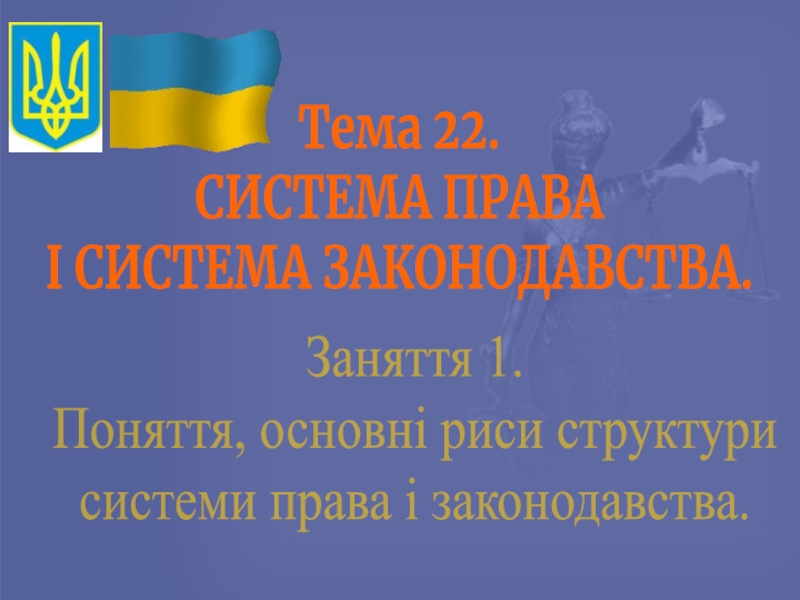Разделы презентаций
- Разное
- Английский язык
- Астрономия
- Алгебра
- Биология
- География
- Геометрия
- Детские презентации
- Информатика
- История
- Литература
- Математика
- Медицина
- Менеджмент
- Музыка
- МХК
- Немецкий язык
- ОБЖ
- Обществознание
- Окружающий мир
- Педагогика
- Русский язык
- Технология
- Физика
- Философия
- Химия
- Шаблоны, картинки для презентаций
- Экология
- Экономика
- Юриспруденция
CAESAREAN SECTION PATELIYA BHARGAV GROUP NO 163 B
Содержание
- 1. CAESAREAN SECTION PATELIYA BHARGAV GROUP NO 163 B
- 2. CAESAREAN SECTIONIt is an operative procedure to
- 3. CAESAREAN SECTIONINDICATIONSCephalo-pelvic disproportionFetal malpresentationsPrevious caesarean sectionFetal distressPlacenta
- 4. CAESAREAN SECTIONINDICATIONSFailed induction Premature rupture of membranesPost
- 5. CAESAREAN SECTIONINDICATIONSVaginal delivery contraindicatedPrevious classical Caesarean section
- 6. CAESAREAN SECTIONCommon indicationsPrevious CaesareanLabour dystociaFetal distressCephalopelvic disproportionMalpresentations ( esp. Breech)Failure of inductionAntepartum haemorrhage
- 7. CAESAREAN SECTIONIncidence - Varies from 15% to 30%Rise in
- 8. CAESAREAN SECTIONContraindications : Valid in the absence
- 9. TIMING OF CAESAREAN SECTIONELECTIVEWhen the caesarean section
- 10. LOWER SEGMENT CAESAREAN SECTIONPreoperative actionsValid informed consentInj
- 11. LOWER SEGMENT CAESAREAN SECTIONANAESTHESIASpinalEpiduralGAPOSITIONDorsal position15 degree
- 12. LOWER SEGMENT CAESAREAN SECTIONAbdominal cleaning and drapingAbdominal
- 13. LOWER SEGMENT CAESAREAN SECTIONUterine incisionLower segment transverseApposition
- 14. CLASSICAL CAESAREAN SECTIONINDICATIONSAccess to lower uterine segment
- 15. LOWER SEGMENT CAESAREAN SECTIONDoyen’s retractor is introduced
- 16. LOWER SEGMENT CAESAREAN SECTIONThe presenting part is
- 17. POST OPERATIVE CARENil orally for 24hrsCrystalloids for
- 18. POST OPERATIVE CAREPalpate the uterine fundusLocation ConsistencyEncourage
- 19. CAESAREAN SECTION : COMPLICATIONSHaemorrhage SepsisAnaesthetic complicationsThrombo – embolismWound complicationsLateIncision herniaProblems in future pregnanciesScar ruptureRepeat caesarean
- 20. Скачать презентанцию
CAESAREAN SECTIONIt is an operative procedure to deliver the fetus through an abdominal and uterine incision, after the period of viability
Слайды и текст этой презентации
Слайд 3CAESAREAN SECTION
INDICATIONS
Cephalo-pelvic disproportion
Fetal malpresentations
Previous caesarean section
Fetal distress
Placenta praevia
Abruptio placentae (with
live fetus)
Dystocia (Ineffective or prolonged labour)
Cord prolapse
Failed trial of Forceps
/ Vacuum deliveryFetal malformations likely to cause obstructed labour
High order multifetal gestation
Слайд 4CAESAREAN SECTION
INDICATIONS
Failed induction
Premature rupture of membranes
Post datism
Pre eclampsia
Gestational Diabetes
mellitus
Intra uterine growth restriction
Rh isoimmunization
Previous unexplained IUFD
Слайд 5CAESAREAN SECTION
INDICATIONS
Vaginal delivery contraindicated
Previous classical Caesarean section / uterine scar
in upper segment
Contracted pelvis
Placenta praevia
Previous VVF repair / Stress
incontinence repairCord presentation
Fetal compromise
Pregnancy with Carcinoma cervix
Fibroid / Ovarian tumor causing obstruction
Genital tract malformations of the cervix / vagina
Слайд 6CAESAREAN SECTION
Common indications
Previous Caesarean
Labour dystocia
Fetal distress
Cephalopelvic disproportion
Malpresentations ( esp. Breech)
Failure
of induction
Antepartum haemorrhage
Слайд 7CAESAREAN SECTION
Incidence - Varies from 15% to 30%
Rise in incidence is due
to
Increased safety of the procedure
Decrease in parity ( Proportion of
nulliparas is more)Older / Infertile / High risk women are having children
Previous Caesarean sections
Increased detection of fetal distress by EFHRM
Breech presentations predominantly delivered by LSCS
Decrease in difficult operative vaginal deliveries
Concern for malpractice litigation
Improving socio economic status
Слайд 8CAESAREAN SECTION
Contraindications : Valid in the absence of maternal indications
of abdominal delivery
Intrauterine fetal death
Gross congenital malformations
Extreme prematurity
Coagulation defect
Слайд 9TIMING OF CAESAREAN SECTION
ELECTIVE
When the caesarean section is done as
a planned procedure to ensure optimal preoperative preparation and surgical
conditionsEMERGENCY
When the caesarean section is done because of sudden deterioration in maternal / fetal condition or during labour due to non progress / failed induction / failed trial
Слайд 10LOWER SEGMENT CAESAREAN SECTION
Preoperative actions
Valid informed consent
Inj Ranitidine 50 mg
IV half to one hour before the procedure
Inj Metoclopramide 10
mg IV half to one hour before the procedureStomach should be empty
Bladder should be catheterized
Fetal presentation, position and FHS should be checked
Слайд 11 LOWER SEGMENT CAESAREAN SECTION
ANAESTHESIA
Spinal
Epidural
GA
POSITION
Dorsal position
15 degree lateral tilt to
prevent supine hypotension / venocaval compression may be given
Слайд 12LOWER SEGMENT CAESAREAN SECTION
Abdominal cleaning and draping
Abdominal incision
Transverse ( Pfannensteil
/ Joel-Cohen)
Post op pain is less
Less chance of wound dehiscence
/ incisional herniaCosmetically better
Vertical infraumbilical midline
Rapid entry into abdomen
Capable of extention
Blood loss minimal
Слайд 13LOWER SEGMENT CAESAREAN SECTION
Uterine incision
Lower segment transverse
Apposition better
Lesser bleeding due
to less vascularity
Less active uterine segment
Healing better
Stretch during subsequent pregnancy
is along the line of incisionChances of rupture during subsequent pregnancy / labour are less
Classical ( Upper segment vertical )
Слайд 14CLASSICAL CAESAREAN SECTION
INDICATIONS
Access to lower uterine segment is restricted because
of adhesions
Lower segment approach is not possible due to
Anterior placenta
praeviaLarge fibroids in the lower uterine segment
Transverse lie ( Dorso inferior positions)
Pregnancy with Carcinoma cervix
Post mortem caesarean section
Слайд 15LOWER SEGMENT CAESAREAN SECTION
Doyen’s retractor is introduced in the lower
part of the abdominal incision to expose the lower uterine
segmentRecognition of lower uterine segment is by the presence of loose peritoneum over it
The loose peritoneum is incised transversely and the bladder is pushed down
Lower uterine segment incision should be made after centralizing the uterus to avoid injury to the uterine vessels coursing along the lateral walls of the uterus
Lower uterine segment incision is made in the middle, deepened till the membranes are reached and then extended laterally by stretching to create a 10 cm opening
Слайд 16LOWER SEGMENT CAESAREAN SECTION
The presenting part is hooked by the
operator and delivered while the assistant applies fundal pressure
The placenta
and membranes are delivered and the inside of the uterus is inspected for any abnormalities and completeness of removal of contentsGreen Armytage haemostatic clamps are applied to the angles and the margins of the uterine incision to achieve control of bleeding
The uterine incision is closed in a single layer with chromic catgut No: 1 or No: 2 using a interlocking running suture to achieve haemostaisis
It is not necessary to close the visceral and parietal peritoneal layers
Peritoneal toilet is done and the abdomen is closed in layers.
Слайд 17POST OPERATIVE CARE
Nil orally for 24hrs
Crystalloids for 24 hrs (appx
2500ml)
Antibiotics as per hospital policy
Pain relief
Care of the bladder
Monitor
Vital parameters
Vaginal
bleedingUrine output
Hydration
Слайд 18POST OPERATIVE CARE
Palpate the uterine fundus
Location
Consistency
Encourage early breast feeding
Oral
fluids after 24 hrs
Discharge from hospital after 96 hrs
Stitch removal
on 7th post operative dayTo avoid exertion for 4 – 6 weeks
Contraceptive advice






































